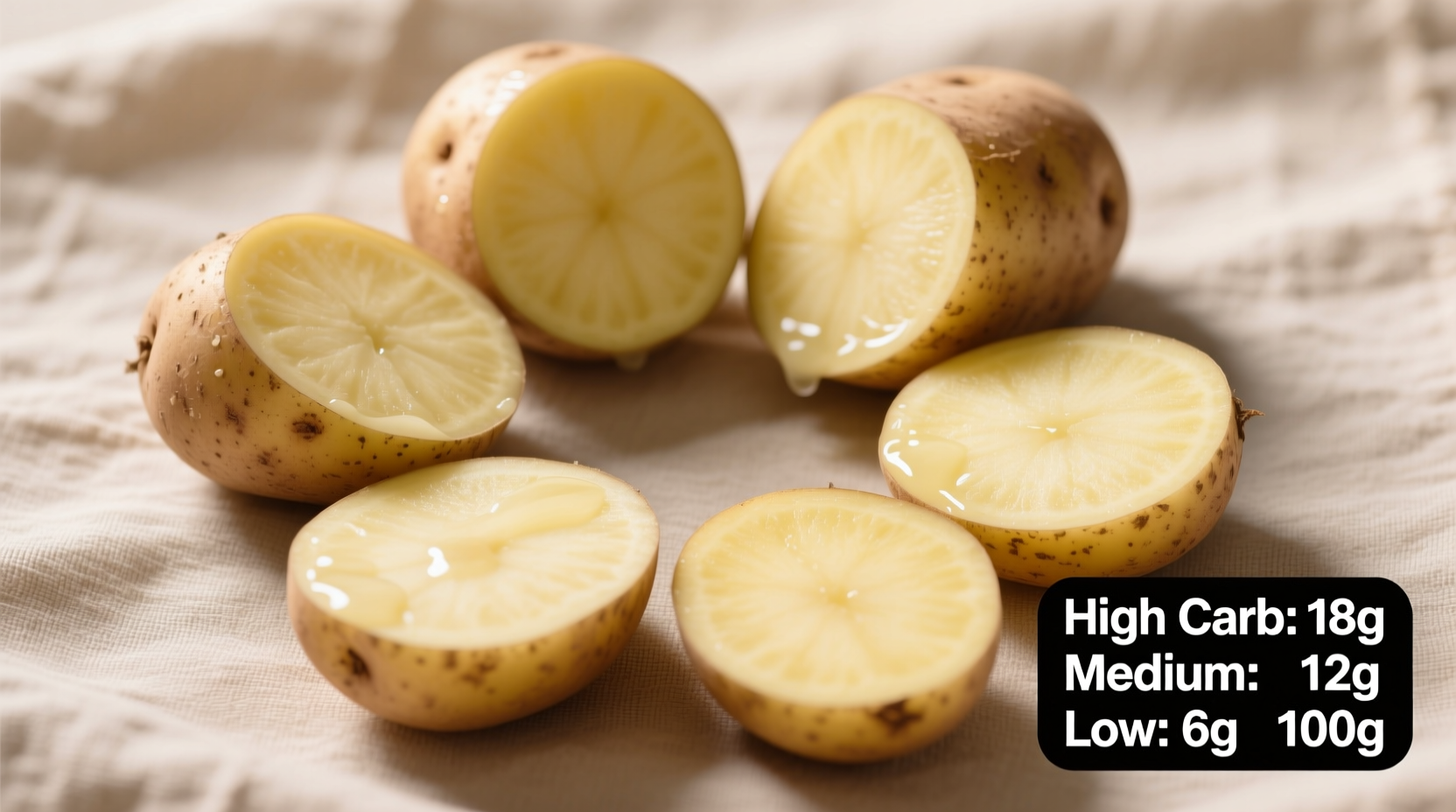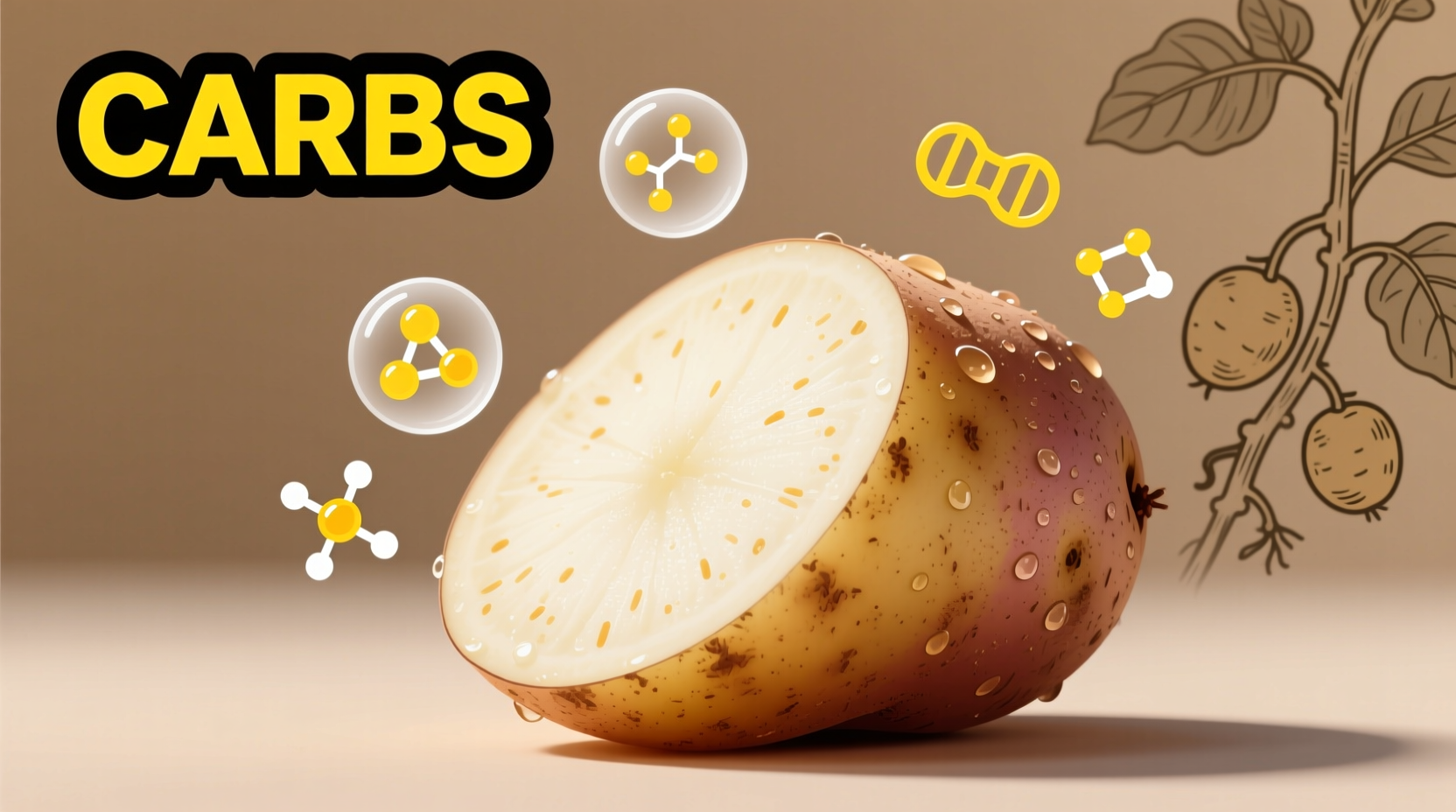Discover exactly how potato carbohydrates impact your diet, whether you're managing blood sugar, following a low-carb regimen, or simply making informed food choices. This comprehensive guide delivers science-backed insights about potato carbs that go beyond basic nutrition labels—helping you understand how preparation methods, potato varieties, and meal combinations affect their nutritional impact.
Understanding Potato Carbohydrate Composition
When examining potato carbs, it's essential to distinguish between total carbohydrates and their components. Potatoes primarily contain starch (about 70-80% of their carb content), with smaller amounts of simple sugars and dietary fiber. The starch in potatoes exists in two forms: rapidly digestible starch (RDS) which quickly converts to glucose, and slowly digestible starch (SDS) which provides more sustained energy release.
According to the USDA FoodData Central database, here's a detailed breakdown of carbohydrate content in common potato preparations:
| Potato Preparation (150g serving) | Total Carbs (g) | Dietary Fiber (g) | Sugars (g) | Glycemic Index |
|---|---|---|---|---|
| Boiled Russet (with skin) | 26 | 2.1 | 0.6 | 85 |
| Baked Russet (with skin) | 29 | 2.5 | 0.8 | 111 |
| Steamed Yukon Gold | 25 | 2.0 | 0.5 | 70 |
| Cooled Boiled Potato (resistant starch) | 22 | 3.5 | 0.6 | 56 |
This comparison reveals how preparation significantly impacts both carb composition and glycemic response. Cooling potatoes after cooking increases resistant starch content by up to 50%, effectively reducing net digestible carbs while improving blood sugar response.
How Potato Varieties Affect Carb Content
Not all potatoes are nutritionally identical. Different varieties contain varying starch structures that influence their carbohydrate profile:
- Russet potatoes: Higher in amylose starch (about 20-30%), which digests more slowly than amylopectin
- Yukon Gold: Moderate amylose content (15-25%) with naturally buttery flavor
- Red potatoes: Higher in amylopectin (70-80%), leading to quicker digestion
- Sweet potatoes: Different carb profile with more beta-carotene and slightly lower glycemic impact
Research published in the Journal of Agricultural and Food Chemistry demonstrates that potato varieties with higher amylose content create more resistant starch when cooled, potentially reducing the glycemic impact by 25-30% compared to immediately consumed potatoes.
Practical Impact of Cooking Methods on Potato Carbs
Your preparation technique dramatically alters potato carbohydrate availability. Understanding these transformations helps you make informed choices based on your dietary goals:
The Cooling Effect: When potatoes cool after cooking, starch retrogradation occurs—transforming some digestible starch into resistant starch. This process can increase resistant starch content from 3% in hot potatoes to 12% in cooled potatoes. Resistant starch functions like dietary fiber, providing only about 2 calories per gram instead of the typical 4 calories from digestible carbs.
Cooking Duration Matters: Overcooking breaks down starch granules, making carbohydrates more readily available for digestion. A study from the University of Surrey found that boiling potatoes for 20 minutes created 30% more rapidly digestible starch than boiling for just 10 minutes.

Dietary Considerations for Different Eating Patterns
Whether you're following a specific dietary approach or managing health conditions, understanding how potato carbs fit into your nutritional strategy is crucial:
For Blood Sugar Management
Individuals monitoring blood glucose should consider both portion size and preparation. The American Diabetes Association recommends pairing potatoes with protein and healthy fats to moderate blood sugar response. Combining a small potato serving (½ cup) with 3 ounces of lean protein and non-starchy vegetables creates a balanced meal with improved glycemic response.
Low-Carb and Ketogenic Diets
While traditional potatoes typically exceed keto diet carb limits (20-50g daily), strategic approaches can sometimes accommodate small portions:
- Choose smaller portions of higher-fiber varieties like Russets with skin
- Always cool potatoes before consumption to increase resistant starch
- Pair with high-fat components to reduce overall carb percentage
- Consider alternatives like cauliflower mash for lower-carb options
For strict keto diets (under 20g carbs daily), even small potato portions usually exceed allowable carb limits. The Academy of Nutrition and Dietetics notes that most keto practitioners eliminate potatoes entirely during initial adaptation phases.
Sport Nutrition Applications
Athletes can strategically use potato carbs for performance. Research in the International Journal of Sport Nutrition and Exercise Metabolism shows that potatoes provide an excellent source of rapidly available carbohydrates for glycogen replenishment when consumed within 30-60 minutes post-exercise. Many endurance athletes use mashed potatoes as a natural alternative to commercial carb-loading products.
Common Misconceptions About Potato Carbs
Several persistent myths cloud understanding of potato nutrition. Let's clarify with evidence-based facts:
Myth: All potato carbs are "bad" and cause weight gain
Reality: Potatoes themselves don't cause weight gain—portion size and preparation do. A study tracking 95,000 participants in the Nurses' Health Study found no association between potato consumption and weight gain when prepared using healthy methods and consumed in appropriate portions.
Myth: Sweet potatoes are always nutritionally superior to white potatoes
Reality: Both offer unique benefits. While sweet potatoes contain more vitamin A, white potatoes provide more potassium and vitamin C per serving. The Harvard T.H. Chan School of Public Health emphasizes that both can be part of a healthy diet when prepared appropriately.
Myth: Potato skins contain most of the nutrients
Reality: While skins do contain fiber and some nutrients, significant nutrition exists throughout the potato. The USDA reports that about 50% of a potato's fiber and 40% of its potassium resides in the flesh, not just the skin.
Practical Strategies for Managing Potato Carbs
Implement these evidence-based approaches to enjoy potatoes while managing carbohydrate intake:
- Size Matters: Stick to ½ cup cooked portions (about the size of a computer mouse) for controlled carb intake
- Cool Before Eating: Refrigerate cooked potatoes for 24 hours to maximize resistant starch formation
- Vinegar Trick: Add 1-2 tablespoons of vinegar to cooking water—research shows this can reduce glycemic impact by 30-40%
- Pair Wisely: Combine with protein (chicken, fish) and healthy fats (olive oil, avocado) to slow digestion
- Variety Selection: Choose higher-amylose varieties like Russets for better blood sugar response
These practical techniques transform how your body processes potato carbohydrates, making them more compatible with various dietary goals without eliminating this nutrient-dense food entirely.
Conclusion: Making Informed Potato Choices
Understanding potato carbs reveals they're neither inherently good nor bad—they're a versatile carbohydrate source whose nutritional impact depends on preparation, portion, and individual health goals. By applying these evidence-based strategies, you can enjoy potatoes as part of a balanced diet while managing carbohydrate intake effectively. Remember that context matters most: a small portion of properly prepared potatoes fits within most dietary patterns when balanced with other nutrient-dense foods.











 浙公网安备
33010002000092号
浙公网安备
33010002000092号 浙B2-20120091-4
浙B2-20120091-4